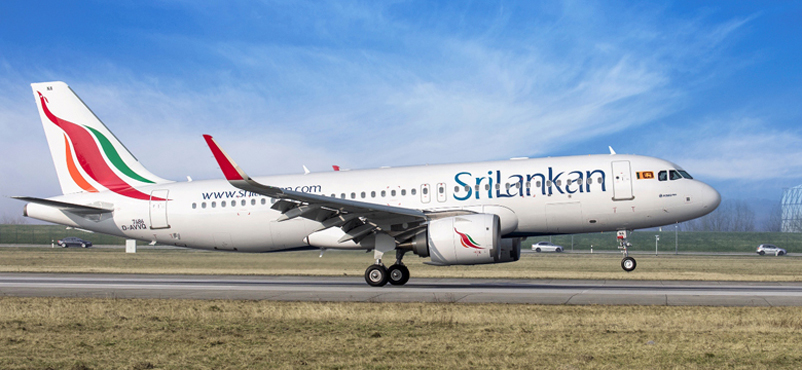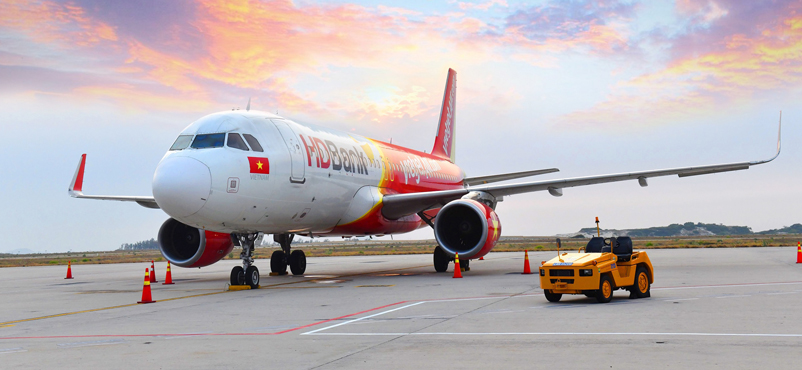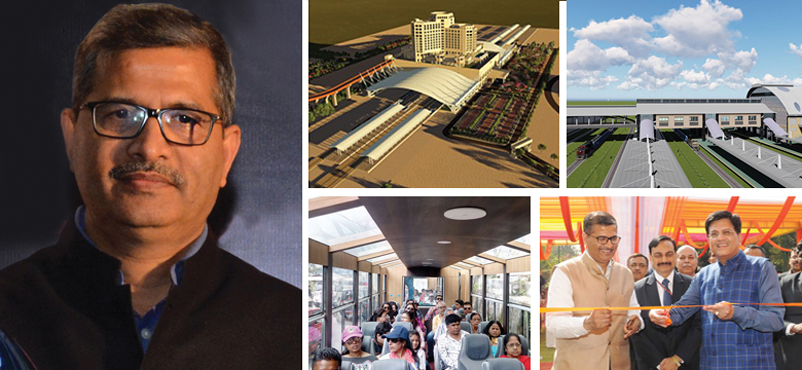Regional connectivity, especially within SAARC nations, remains important for seamless movement of people, for business and tourism. Chinthaka Weerasinghe, Manager—Northern India, SriLankan Airlines shares his insight on ways to boost travel and Island nation’s flag carrier’s role therein. Excerpts from the interview:
 Talk to us about the SriLankan Airlines and its contribution in aiding to regional connectivity?
Talk to us about the SriLankan Airlines and its contribution in aiding to regional connectivity?
SriLankan Airlines connects more SAARC destinations than any other airline. We service 14 destinations in India, two destinations in Pakistan – Lahore and Karachi – one city in Bangladesh and another two in Maldives. So, we service 19 destinations in 4 SAARC countries; more than any other airline in the region. Only Bhutan and Afghanistan are not served.
We have around 180 flights per week, out of which we have 134 flights to India every week. We have the flexibility to offer service to our passengers. For instance, it is quite difficult to even go to Bangladesh from here. It is similar with Pakistan. I think Pakistan Airlines is not flying to Delhi, so the only way to go to Pakistan is with us. Not only that, we take a lot of passengers flying from Delhi, Mumbai, and Chennai with us.
Maldives (as a tourist destination) was built by Sri Lankan Airlines, in the 1980s. It is a one-hour flight from Colombo and currently we have five flights a day from Colombo to the Maldives and are still the only carrier flying to Gan (the southernmost island of the Maldives)
That is one of the main reasons why Oneworld Alliance brought Sri Lankan in its ambit, because of our robust growth and presence in South Asia.
Is the outbound from Sri Lanka to the Maldives that high? How much of it is beyond traffic?
Well, there are a lot of Sri Lankans flying into Maldives, but most of it is beyond traffic. Our main markets flying to Maldives, in the late 1990s and early 2000s used to be Italy, Germany, and Japan. Now, China is on number one spot, followed by India on the second spot.
We have very good connections to India and China. In India, we are the market leaders from Mumbai to Maldives and have 70-80 percent market share. We did not have very good connections from Delhi, so our market share was down. Now, we are getting good numbers from Delhi, too, because of good connections to Colombo and beyond; about 40-50 percent market share. South India is anyways very well connected.
Coming back to regional connectivity…
Yes, this is how we have connected SAARC, unlike any other airline. If you look beyond, we also connect Seychelles in the Indian ocean. We connect four points in the Indian ocean, with the only exception of Mauritius.
So, what more needs to be done on the regional connectivity front? How will this gain momentum? The Indian government is working to promote Ramayana Circuit, in collaboration with Nepal And Sri Lanka. IRCTC has launched a package, involving Sri Lankan destinations. That could benefit Sri Lankan Airlines too, given that Indian travellers are aspirational, and probably would become flyers in not so distant future?
We have been working with the Indian railways for some time now, almost 3-4 years. The package may have been launched in the recent past, but they already have had stand-alone tours to Sri Lanka.
As a part of the rail tour, the sightseeing part will be given to Sri Lanka. We are working on this very closely. Importantly, we are not only focussing on tourism into Sri Lanka from India but also vice-versa. We are perhaps one of the very few airlines to operate seasonal flights into Bodh Gaya and Varanasi and bring in close to 180000-200000 pilgrims each year. So, we support Indian tourism product.
We (Sri Lankans) are the fourth largest arrivals into India, after key markets like the USA and the UK, and Bangladesh. That too is a lesser-known fact. Most of the traffic is pilgrim and Buddhist tourists.
How do you see tourism playing a role in regional integration and, probably the success of multilateral initiatives such as SAARC?
Sri Lanka and the Maldives, I think, are one of the few countries in the region to provide visa-on-arrival facility. It is a very hassle-free process where you can book online but the rest of the countries, in the region, do not have that yet. Unless the issue is address, I do not see much happening. We will have the numbers because of the proximity, but if we are eyeing a big growth in tourism, it is for the authorities to facilitate travel processes better. That, I think, is one of the biggest drawbacks in facilitating the growth of tourism in the region.
Give us some insight into the nature of the Indian outbound into Sri Lanka?
Mainly, it is leisure, but we are seeing a big growth in the MICE segment as well. It has gone up to about 10-15 percent. Then there are destination weddings, those are also big groups.
Is it predominantly Colombo, or even beyond?
It is mainly in Colombo. Some resorts built by Shangri La like the one in Hambantota (Shangri-La’s Hambantota Golf Resort, Sri Lanka) have been attracting wedding groups. The wedding segment is emerging as an important area of growth.
Are there any plans for further expansion of routes and networks within India? Any new destination on the radar?
No, not as of now. We are only looking at consolidation, as of now, because we expanded quite heavily the last year.
How many destinations were added the last year?
We added three destinations in India. We introduced a connection to Australia (from Colombo). Colombo to Melbourne very popular among Indian tourists, especially north Indian tourists. It is an immediate connection and quite convenient. One short-haul followed by a long-haul flight. The flight is in the evening and passengers can rest during the flight.



































